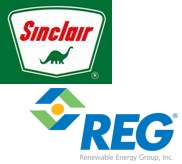 Agribusiness company Monsanto and algae company Sapphire Energy have announced a partnership to “discover” genes that could be applied to agriculture particularly in the areas of yield and stress. As Sapphire works to bring algal fuels to commercial scale, the company is searching for traits that make a particular strain of algae better suited for fuel or other biochemicals. In this partnership, the technology that Sapphire uses with algae will be applied to to help identify genes that might positively affect other traditional crop yields.
Agribusiness company Monsanto and algae company Sapphire Energy have announced a partnership to “discover” genes that could be applied to agriculture particularly in the areas of yield and stress. As Sapphire works to bring algal fuels to commercial scale, the company is searching for traits that make a particular strain of algae better suited for fuel or other biochemicals. In this partnership, the technology that Sapphire uses with algae will be applied to to help identify genes that might positively affect other traditional crop yields.
“Sapphire’s expertise in algal research offers a novel platform that will allow us to screen and identify promising genes faster,” said Robb Fraley, Monsanto’s chief technology officer. “We face a common goal in looking for ways to improve upon an organism’s ability to achieve greater productivity under optimal and sub-optimal environmental conditions. Together with Sapphire, we can identify genes affecting such traits in algae that might also be applied to corn, cotton, soybeans and other crops.”
![]() Fraley notes that algae is an ideal plant to research because they have a similar photosynthetic process to other plants but are simple and efficient to work with. Algae also can be grown, screened, tested, and selected with high throughput tools, which enables a relatively fast process for researchers.
Fraley notes that algae is an ideal plant to research because they have a similar photosynthetic process to other plants but are simple and efficient to work with. Algae also can be grown, screened, tested, and selected with high throughput tools, which enables a relatively fast process for researchers.
“Monsanto has always been at the forefront of agricultural technology developments and innovation,” said Jason Pyle, chief executive officer for Sapphire Energy. “Through this collaborative partnership, we’ll focus our leading-edge research agenda on some of the biggest questions facing both agriculture and energy. By leveraging our algae platform and tools to improve crop yield and enhance crop performance, Sapphire will be able to accelerate our ability to produce a renewable crude oil replacement and reduce our country’s dependence on foreign oil.”
Under the agreement, Monsanto will make an equity investment in Sapphire and the two companies will collaborate on algae-based research projects.








